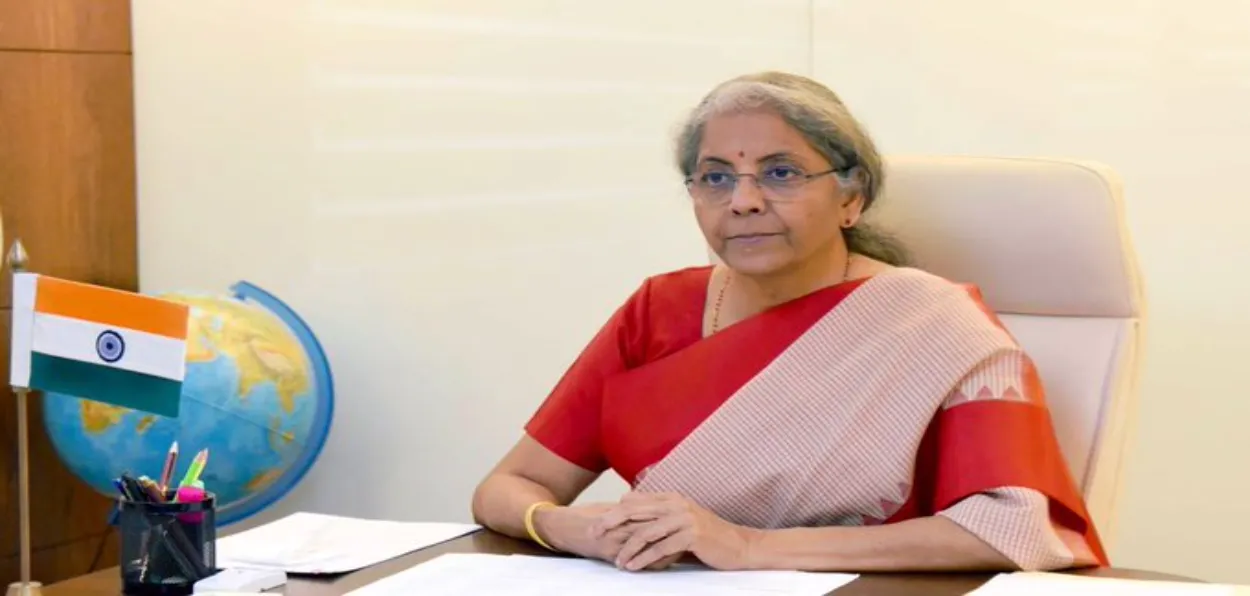
 Sushma Ramachandran/
Sushma Ramachandran/
Finance Minister Nirmala Sitharaman’s fifth budget seems to have put smiles on everyone’s faces. An effort has been made to provide succor to all sections of society - from tribals to farmers to the salaried middle class even while pushing forward with the drive toward aggressive investment in infrastructure.
Elections are due next year but the government was not expected to present a populist budget. It will have a chance to do that in 2024 even if it is for half the year. However, this set of budget proposals has begun trying to ease the problems of those left out of the Covid relief measures in the past two years.
At the same time, she has managed to maintain fiscal discipline by containing the deficit within the target of 6.4 percent of GDP for the current fiscal.
The target for next year has also been kept at 5.9 percent in line with the earlier declared plan of reducing the deficit gradually. While this was expected, given the known revenue buoyancy, there have been concerns over the huge outlays that have to be met to support social welfare schemes. For instance, the revamped free food grains program will cost an estimated Rs. 2 lakh crores annually.
The big highlight of her proposals is the 33 percent increase in capital expenditure on infrastructure, a continuation of the push in this direction over the past two years. It has come as no surprise, given the need to continue the process of economic revival after the pandemic. The other much-awaited tax concession was the increase in rebate on personal income tax slabs for the middle class. This measure has finally blunted the criticism that little has been done for this segment, especially the salaried class that bears the brunt of taxation.
As for the increase in capex, the sharp acceleration by 33 percent to Rs. 10 lakh crore brings the investment to 3.3 percent of GDP as against 2.7 percent last year and 1.7 percent between 2015 to 2019. This will have the twin impact of pushing economic growth as well as facilitating the creation of more jobs, an area of considerable concern in recent years. The Economic Survey has pointed to an improvement in the unemployment rate to 7.2 in the second quarter of 2022 as compared to 9.8 percent in the previous year. The data for December shows a rise to 8 percent and an even higher 10 percent for urban unemployment, according to the Centre for Monitoring Indian Economy. But this has once again improved in January as the unemployment rate fell to 7.14 percent while urban unemployment dipped to 8.55 percent. The rural unemployment rate fell more sharply to 6.48 percent from 7.44 percent in the previous month.
The anxiety to push growths and create more jobs would also have been the driver for the expansion of the PM Awas Yojana which is being enhanced by 66 percent. The outlay for the scheme which aims to provide affordable housing to those at the bottom of the pyramid has been raised from Rs. 48,000 crore to Rs. 79,000 crore.
However, the long-awaited concessions in personal income tax for the middle class have class has been designed carefully to ensure that they will be available only for those who opt for the reformed new tax regime. The old regime allowed exemptions while the new one is without any of these. The bulk of taxpayers, however, continue to bank on the old system. So the offer of raising the ceiling for non-payment of tax from Rs. five to seven lakhs only apply to those opting for the new regime. This is the case also for the new tax slabs that provide for zero tax up to Rs. three lakhs.
As for the policy initiatives towards medium and small enterprises, the credit guarantee scheme has been expanded by an infusion of Rs. 9000 crores in the corpus envisaging additional collateral envisaging an additional collateral-free credit of Rs. two lakh crore. In addition, the interest rate has been cut by one percent. Micro-enterprises of below Rs. two crores will also be able to avail of a higher rate of presumptive taxation.
The budget proposals remain in the please-all mode with key constituencies especially those in the marginalized sectors like tribals and women being given some form of support. Artisans and craftspeople, for instance, have been given a special package of assistance. Similarly, a new scheme has been outlined for particularly vulnerable tribal groups with an outlay of Rs. 15000 crores. A special savings scheme is being launched for women as well.
The cooperatives sector has equally been given pride of place with a scheme to set up much-need storage capacities in rural areas through primary agricultural cooperative societies. This comes along with a rise in agricultural credit to Rs. 20 lakh crore.
Green is also a keyword in the budget with the national hydrogen mission being mentioned along with the outlay of Rs. 35000 crores for energy transition and net zero objectives along with energy security.
ALSO READ: Pakistan: Hafiz Saeed celebrates Eid in Gotki after a month of being in jail
The budget proposals for 2023-24 are thus wide-ranging and ensure that many previously neglected segments are given relief and concessions. Sitharaman carried out the task even while ensuring that the fiscal deficit targets are adhered to without compromise. With this careful balancing act, the country’s finances are likely to be kept on an even keel. Even the threat of global headwinds which are bound to be a challenge even next year will be met with greater confidence owing to this fiscal discipline.
